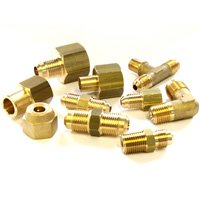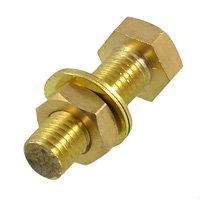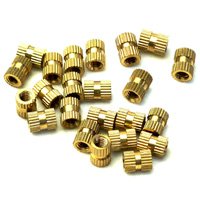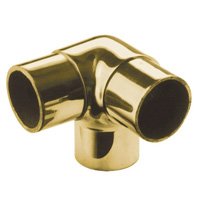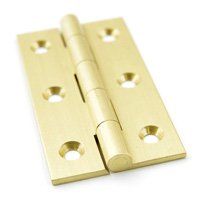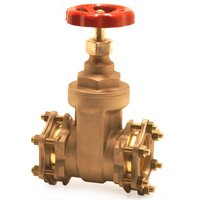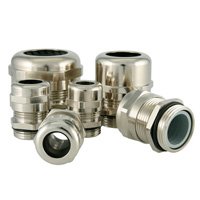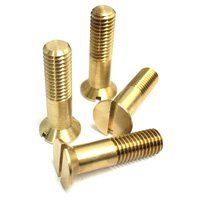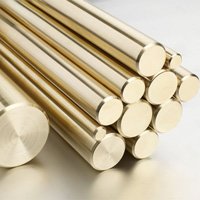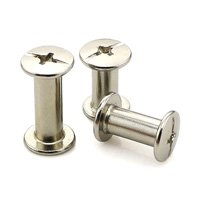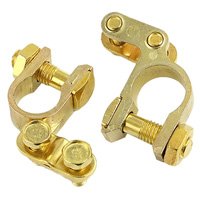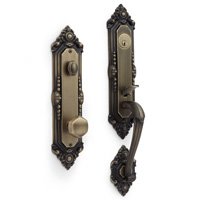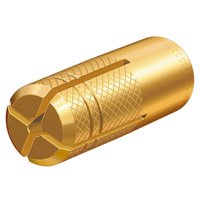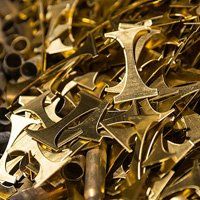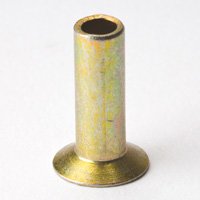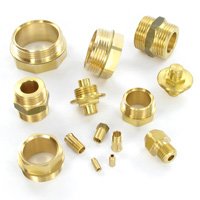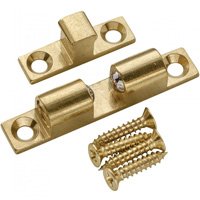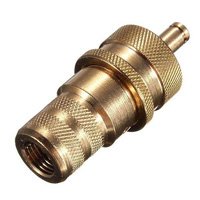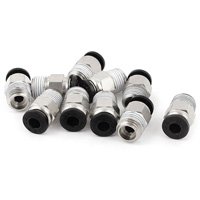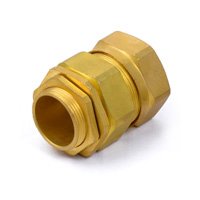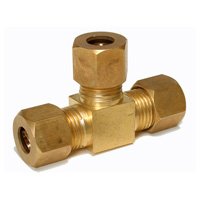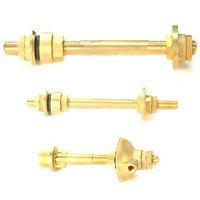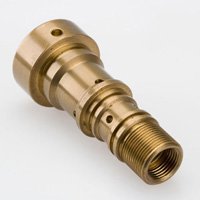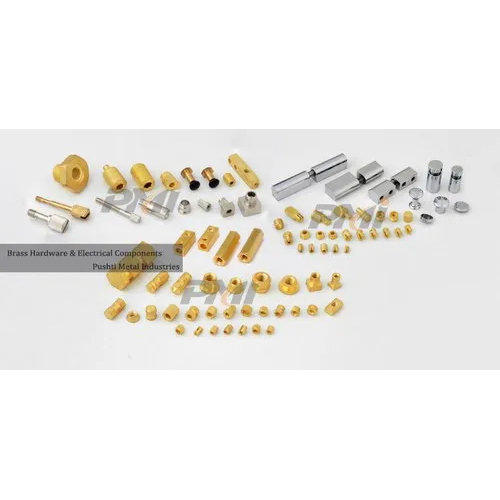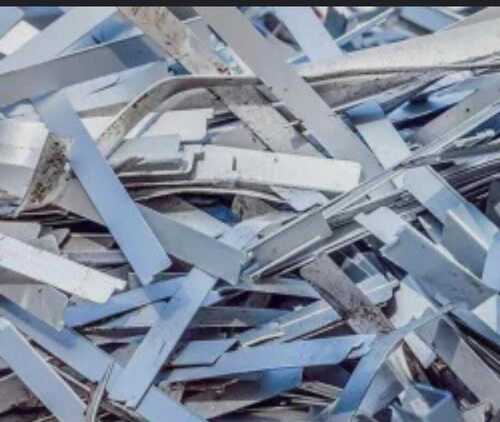Brass Hardware & Components
Recently Added Products
What is Brass Hardware & Components used for?
Home hardware made of brass and bronze has been around for at least three-hundred and fifty years. Hardware made from solid brass is an alloy of copper, zinc, and tin.
Knobs, handles, Door knockers, cabinet pulls, hinges, and even air register covers are all uses of home brass hardware. Solid metals like brass and bronze are often used to make such things. Many different types of brass and bronze alloys have been utilized in the hardware industry for decades.
Lead is a subject that will come up regularly when talking about Brass Standards. Brass contains lead because it facilitates cutting, increases pressure tightness, and has a low melting point. About 2% lead by weight is mixed in as an additive.
It's perfect for building something that will last a long time because it's so sturdy.
Different types of Brass Hardware Products
-
Brass hinges
Castings made from brass, which is both malleable and produces less friction, are very helpful for hinges. Metal alloys such as steel, stainless steel, bronze, and nickel can be expensive, but brass hinges are a more affordable option that can be used in a wide variety of industrial products, furniture, and home applications.
Solid brass door hinges are built to last. Brass is malleable because it is a tensile metal. Because of its malleability and resistance to cracking, brass is frequently used in bearings, valves, and other mechanical components.
Brass, thanks to its malleability and longevity, is ideal for use in hinges. Hinges made of solid brass are known as butt hinges. Because of their strength and durability, butt hinges are commonly used on both interior and exterior doors. The pin in the hinges is fixed, making it impossible to take the hinge apart.
-
Glass Fittings
The supplied Brass Glass Fitting are well favored by customers and are accessible at the most affordable price conceivable.
Glass fittings are not only necessary, but also a stylish upgrade that may completely transform the feel of a room. They're fantastic because they achieve their intended effect—a sensation of ultimate luxury.
Multiple types of glass fixtures are commonly utilized in the design of public buildings including shopping centers, hotels, and airports.
-
Knobs
If someone has offended you, use the phrase "Brass Knobs" to get even with them. Brass Knobs improve productivity because they eliminate the need for specialized equipment like wrenches and spanners to tighten or loosen screws. Useful in settings where screws are often moved about, like during equipment swaps. Male and female screws are the most common, however the reamed-hole variety is also provided.
-
Brass Wall Hook
An important initial step is to mount a pair of brass wall hooks near the entrance. Put hooks on the walls at different heights to make the most of the area, which is ideal for children's backpacks. Paint the wall a color that stands out from the rest of the room to draw the eye there.
Take a cue from this welcoming foyer's artful arrangement of hats and umbrellas, which works well even if you're not into solid-color feature walls. There's a lot happening here, but the end product is stunning.
-
Cabinet Pulls
Drawers can be opened by pulling on a cabinet pull, which is a small attachment attached to the front of the drawer. Their distinctive feature is a single attachment point, in contrast to the several attachment points of handles.
These are the kinds of little points that may make or break the look of a set of kitchen cabinets. Pulls of many shapes, sizes, and materials can be found in hardware stores.
To add a special touch to a set of cabinets, you might shop for vintage glass or porcelain pulls.
-
Door Knockers
The door at No. 10 Downing Street, where the British Prime Minister resides, features a brass lion's head door knocker, a popular design choice. The lion's head represents courage, majesty, and strength to certain people.
A Brass Hardware & Components door knocker is a popular fixture in modern British homes. However, they now have a completely new meaning, being primarily decorative rather than practical.
A stunning door knocker is a surefire way to draw attention to any front door. If your entrance is lacking character, try installing a decorative door knocker.
-
Tower Bolt
A Tower Bolt is a type of bolt that is rod-shaped and is used to secure a door or other opening by sliding into a cylindrical case on the frame of the opening. It's not clear if these are made of a ferrous or non-ferrous material.
Tower bolts are installed on doors using drilling machines, as they feature holes on the side of the bolt groove. It is possible to set them up so that they both enhance the home's aesthetic and serve practical purposes.
The solutions they provide for security are long-lasting and simple to set up. These door tower bolt locks are a great way to add style to your home and are available in a number of different materials, including aluminum, brass, stainless steel, and more. They also come in a variety of designs, such as the , Necked tower bolt, Skeleton tower bolt, Concealed tower bolt, etc.
Wide Uses and Types of Brass Precision Turned Components
A copper-zinc alloy, brass has several applications in manufacturing. It's the metal of choice for making practically anything from furniture to electronics. Despite their higher cost compared to common metals like iron, their extended lifespan and resistance to rust mean they have many practical uses.
The brass Turned Components are used in:
-
- Plastic industries
-
- Pharmaceutical industries
-
- Mechanical industries
-
- Aerospace industries
-
- Electrical Industries
-
- Automobile industries
-
- Telecommunication Industries
Brass Turned components comes in:
-
- Cable glands
-
- Sheet metal Components
-
- Gas Parts
-
- Brass Inserts
-
- Sanitary fittings
-
- Adapters
-
- Brass running stud
-
- Hose barbes
-
- Connectors
-
- Pneumatic fittings
Brass turned components have a number of desirable qualities:
-
- One of the biggest reasons brass is employed in a variety of industrial applications is because of its high tensile strength, which allows it to get shape rapidly.
-
- Since brass has a low coefficient of friction, it is often used to manufacture components such as doorknobs, locks, keys, and gears.
-
- Because brass alloy has a low melting point, it may be easily shaped into a variety of molds without the need for excessive heat.
-
- All sorts of complicated shapes are no problem for brass components, and they always turn out looking the same.
-
- Furthermore, because brass is not magnetic, recycling scrap metal is quick and painless.
What is a Brass Fasteners?
Bolts, nuts, screws, and washers are just a few of the brass fastener options. They have a wide range of practical uses in the business world. Bolts, hex nuts, screws, and washers are available in a wide range of sizes and thicknesses to meet the needs of different customers.
The primary metal used in the production of brass fasteners is high-quality brass, which can take the form of rods, hollow pipes, or metal sheets.
The finished hardware is either a polished brass or a buffed brass. Whether they are natural, brass-polished, tin-plated, nickel-chromium-plated, copper-layered, or stainless steel-plated is determined by the component's use or the preferences of the end user.
Sand casting uses brass powder to manufacture durable, long-lasting fixtures. Sand casting with brass is a traditional technique that has been used for millennia. Be aware that brass and similar materials are made of very delicate metals before you choose them for creating home hardware. They are readily dented and dinged up.
Solid brass cabinet hardware is the way to go if you're going for a classic look in your home's decor. Hardware for the home will still typically be made from brass or bronze alloys. As a result of this ongoing pattern, an increasing number of businesses are placing orders with brass hardware producers.
FAQs: Brass Hardware & Components
Q. What do you use Brass Fasteners for?
Ans: When you need to keep several pieces of paper together, you can use a butterfly clips, brass fastener, paper fastener, or split pin. In 1866, George W. McGill was granted a patent for the device. Brass Fasteners can be used in addition to a punch or press to quickly and conveniently penetrate multiple sheets of paper.
Q. Are Brass Fittings better than Copper?
Ans: In plumbing projects where there will be a number of turns and connections, brass fitting may be preferable to copper fitting since it is easier to work with. This means that brass valves share many of the advantages of their copper counterparts.
Q. What are the Different Types of Brass Fittings?
Ans: Here are the types of Brass Fittings:
-
- Elbow Fittings
-
- Compression Fittings
-
- Tee Fittings
-
- Cross Fittings
-
- Valve Fittings
-
- Union Fittings
-
- Nipple Fittings
-
- Cap Fittings
-
- Plug Fittings
-
- Coupling Fitting
-
- Cross Fitting
Q. What are Brass Fasteners called?
Ans: Brass Fasteners also called Paper fastener, Split pin, Butterfly Clips, and brad. Every house has brass fittings since they are so important to the plumbing system.
Q. What is Forged Brass?
Ans: Forged Brass is a superior manufacturing process achieved by subjecting heated pure brass to extreme pressure in forging presses, resulting in a flawless finished product. After being hand-polished, the object is given a high-temperature lacquer finish.
Popular Products
Human HairForklift TrucksServo Voltage StabilizerBasmati RiceBackhoe LoaderCarry Bag Making MachineDrum LifterElectric StackerScissor LiftsIndustrial Vibrating ScreenRotameterFlowmeterRotary Air CompressorIndustrial Eto SterilizerRice Packaging MachinesShredding MachineHammer MillAutomatic Labelling MachineDiesel ForkliftAerial Work PlatformStorage Rack SystemEpoxy ResinMild Steel BarStainless Steel SheetsStainless Steel StripsBag Filling MachinesAsphalt PlantsSlat ConveyorOintment PlantPlanetary MixersLadies KurtisLed LightsCctv CameraBall ValveAnti Cancer MedicineAir CompressorIncense SticksSolar LightsGoods LiftsVitrified TilesStainless Steel CoilsPvc PipesPvc Pipe FittingsUpvc PipesUpvc Ball ValvePipe Elbows